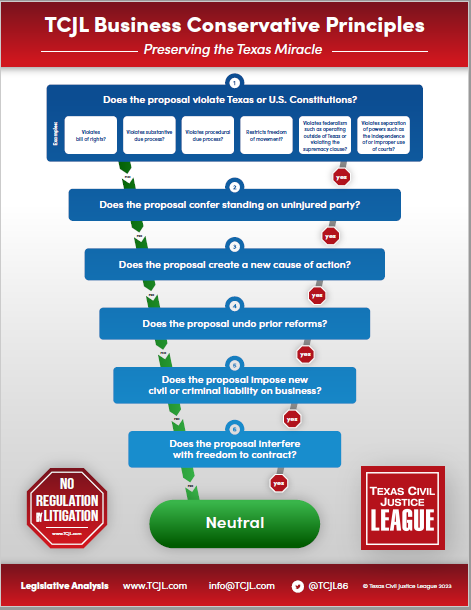 In a case we first reported in December, 2022, the Texas Supreme Court has reversed an Austin Court of Appeals opinion overturning a summary judgment in favor of an emergency care physician under the “willful and wanton negligence” standard under Chapter 74, CPRC.
In a case we first reported in December, 2022, the Texas Supreme Court has reversed an Austin Court of Appeals opinion overturning a summary judgment in favor of an emergency care physician under the “willful and wanton negligence” standard under Chapter 74, CPRC.
Kristy Marsillo, D.O. v. Robin Dunnick, Individually and As Next Fried to Raynee Dunnick, and Dana Dunnick (No. 22-0835; January 12, 2024) arose from a snakebite injury sustained by plaintiff’s daughter Raynee. Dr. Marsillo, the emergency room physician, assessed and treated Raynee in accordance with the hospital’s clinical guidelines for snakebites. Under those guidelines, snakebite patients are assessed using an algorithm that produces a “severity score.” If the score is 3 or less, the physician will monitor the patient for further symptoms. Once the score exceeds 3, the guidelines call for the administration of antivenom. In this case, Raynee’s score did not rise above 3 until three hours after she was admitted to the emergency room, at which point Dr. Marsillo started antivenom treatment. Raynee was subsequently transferred to Dell Children’s Medical Center, where she was treated with additional antivenom and eventually discharged. Plaintiff sued Dr. Marsillo, alleging that she acted with willful and wanton negligence in failing to administer antivenom immediately upon Raynee’s arrival at the hospital, which caused Raynee to suffer pain, disfigurement, and permanent impairment. Plaintiff sought more than $1 million in damages. Dr. Marsillo moved for a no-evidence summary judgment, alleging that plaintiff did not produce more than a scintilla of evidence establishing liability. The trial court granted the motion. Plaintiff appealed.
The Austin Court of Appeals reversed and remanded on the basis that plaintiff’s expert testimony presented more than a scintilla of evidence that Dr. Marsillo could possibly have acted willfully and wantonly despite her adherence to the clinical guidelines and her own medical judgment. The court first adopted the position taken by other intermediate appellate courts that the willful and wanton standard equates to gross negligence. In order to show gross negligence, plaintiff must show: (1) “that the defendant’s acts or omissions departed from the standard of care ‘to such an extent that it creates an extreme degree of risk of harming others, considering the probability and magnitude of the potential harm to others,” and (2) “whether [defendant] knew about the peril caused by her conduct and continued to act in a way that demonstrated she did not care about the consequences” (citations omitted). These “objective” and “subjective” prongs of the test require evidence showing that the physician not only deviated from the standard of care, but in doing so created a high likelihood of harm to the plaintiff, knew about that likelihood, and proceeded anyway with conscious disregard for the rights, safety, and welfare of others.
In an opinion by Chief Justice Hecht, SCOTX reversed and reinstated the trial court’s summary judgment in favor of the physician. Justice Hecht commenced his analysis by detailing the contents of the hospital’s Snakebite Treatment Guidelines, which were based on recommendations of the American Academy of Family Practice and the manufacturer of the antivenom treatment used at the Seton Hospitals. In short, the guidelines establish a graduated scale of severity that dictates when the antivenom, which can have serious adverse side effects, should be administered. As Chief Justice Hecht noted, the physician precisely followed the guidelines, but plaintiff argued that the physician should have disregarded the guidelines and commenced the administration of antivenom immediately.
Section 74.153(a), CPRC, provides that a plaintiff in a health care liability claim against a physician arising out of the provision of emergency medical care must meet a “willful and wanton” negligence standard to establish liability. Observing that the Legislature did not define “willful and wanton,” the Chief discussed the various contexts in which Texas statutes prescribe that standard and intermediate appellate court opinions concluding that the standard equates to gross negligence. He then turned to the objective and subjective components of the gross negligence test, as described above. “Willful and wanton,” the Chief wrote, given their plain, ordinary meaning, suggest, at least, that the actor is not only consciously indifferent to the likelihood that his conduct will cause serious injury but is willing that it do so, even if not quite intending to inflict harm (as distinct from intending to act as he does. That could make willful and wanton negligence a yet higher standard than gross negligence.” Since both parties to the appeal agreed that “willful and wanton” negligence was at least gross negligence, the Chief deferred making that call unless, based on the evidence, the Court had to.
It turns out that the Court did not have to decide whether “willful and wanton” is a higher standard. Examining the testimony of plaintiff’s expert, the Chief explained that the expert “[did] not explain how he arrived at the opinion that the standard of care is always to administer antivenom immediately upon the first sign of envenomation or why the risks of antivenom administration should not be considered, as required by the Guidelines.” The expert in fact failed to address the Guidelines at all or precisely how the defendant’s adherence to them in this case “objectively posed an extreme risk to [plaintiff] instead of avoiding the competing danger of side effects from antivenom administration.” As to the subjective prong of the test, the expert never explained how a physician who followed generally accepted guidelines for treating snakebites could have acted with “conscious indifference.” The expert’s affdavit was thus entirely conclusory and, consequently, “no affidavit at all.” Plaintiff did not meet the summary judgment standard of raising a genuine issue of material fact.
The issue of whether the “willful or wanton” standard requires something more than a showing of gross negligence will have to wait for another day. Chief Justice Hecht’s analysis would seem to leave open the door to that possibility. In any event, the Court’s opinion is good news for physicians and health care providers, as well as for the civil justice reform community in general. It vindicates the 2003 efforts to raise the liability threshold in emergency room settings, thereby increasing access to such care. The opinion also reminds us that passing statutes is only half the battle. Applying them to real world situations is another matter altogether. That’s why we can never rest in our efforts to improve the training, education, and overall quality of the judiciary.












